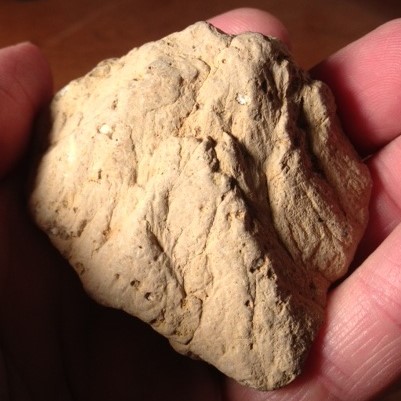United States Meteorite Impact Craters
- Home
- Crater Identification
- Alamo, Nevada
- Ames, Oklahoma
- Avak, Alaska
- Barringer, Arizona
- Beaverhead, Montana
- Chesapeake Bay, Virginia
- Cloud Creek, Wyoming
- Crooked Creek, Missouri
- Decaturville, Missouri
- Decorah, Iowa
- Des Plaines, Illinois
- Flynn Creek, Tennessee
- Glasford, Illinois
- Glover Bluff, Wisconsin
- Haviland, Kansas
- Kentland, Indiana
- Manson, Iowa
- Marquez, Texas
- Middlesboro, Kentucky
- Newporte, North Dakota
- Odessa, Texas
- Red Wing, North Dakota
- Rock Elm, Wisconsin
- Santa Fe, New Mexico
- Serpent Mound, Ohio
- Sierra Madera, Texas
- Upheaval Dome, Utah
- Weaubleau, Missouri
- Wells Creek, Tennessee
- Wetumpka, Alabama
- Possible Impacts
- User-submitted Possibles
- Open Questions
- About This Website
Beaverhead crater, Montana and IDAHO

The Beaverhead impact structure, which spans the border between Montana and Idaho, is the second largest known meteorite impact crater in the United States. The crater is exposed at the surface, but at around 600 million years old or greater, is extremely weathered. It has also been disrupted by multiple subsequent regional faulting and displacement events (McCafferty, 1995 and others). Few remnants remain visible, though shattercones are found in the Beaverhead Mountains.
Age and size: Kellogg et al., 1999, provide an age of 850 to 900 million years, based on U-Pb and 40Ar/39Ar data. Carr and Link (1999) cautiously propose a younger age of about 600 million years or less, based on trace fossil evidence, and support a diameter of about 100 km.
Evidence of Impact Origin
The impact origin of each location listed on this website has been supported by unambiguous diagnostic evidence of hypervelocity impact that has been reported in a scientific (usually peer reviewed) context. Without such evidence, a geological structure is not a confirmed impact crater. This section, which is included for each crater on this website, is not an exhaustive list of such published evidence, but is meant to demonstrate that appropriate work has been done for each listing.
Nature of diagnostic evidence:
- shatter cones
- planar deformation features in quartz and feldspar
Other significant evidence: breccias with shocked quartz, impact melts. (e.g.: Carr and Link, 1999; Fiske et al., 1992; Kellogg et al., 2003).

Bibliography and References:
(If links to articles don't work, don't give up. Try pasting the link shown into a search engine or searching for the article authors, title, or other reference information. If your research leads you to additional scientific references related to this crater, please help improve this resource by sending a note with the new citation(s) to: )
Carr J., Link P. K. (1999) Neoproterozoic conglomerate and breccia in the formation of Leaton Gulch, Grouse Peak, northern Lost River Range, Idaho: Relation to Beaverhead Impact Structure, in Hughes, S.S., and Thackray, G.D., eds., Guidebook to the Geology of Eastern Idaho: Pocatello, Idaho Museum of Natural History, pp. 21-29.
http://imnh.isu.edu/digitalatlas/geo/gsa/papers/gsac1p2.pdf
Carr J., Link P. K., Geslin J. K., McCafferty A., Hargraves R. B. (1996) Sedimentary breccia deposited within Eocambrian(?) Beaverhead Impact Crater, Lost River Range, Idaho (abstract). Geological Society of America Abstracts with Programs, Volume 28, No. 7, pp. A-230.
no link found
Fiske P. S., Hargraves R. B. (1994) The Beaverhead Impact Structure, SW Montana and Idaho: Implications for the Regional Geology of the Western U.S. The Belt Symposium III, Whitefish, Montana. preprint, Lawrence Livermore National Laboratory.
P. S. Fiske, R. B. Hargraves, T. C. Onstott, Koeberl C., Hougen S. B. (1992) Pseudotachylites of the Beaverhead impact structure: Geochemical geochronological, petrographic, and field investigations. in Dressier B. O., Grieve R. A. F., Sharpton V. L., (editors.) Large Meteorite Impacts and Planetary Evolution. Geological Society of America Special Papers 293, pp. 163-176.
Hargraves R. B., Cullicott C. E., Deffeyes K. S., Hougen S., Christiansen, P. P., Fiske, P. S. (1990) Shattercones and shocked rocks in southwestern Montana: the Beaverhead impact structure. Geology Volume 18, No. 9. pp. 832–834.
Hargraves R. B., Kellogg K. S., Fiske P. S., Hougen S. B. (1992) Allochthonous impact-shocked rocks and superposed deformations at the Beaverhead site in southwest Montana, in Dressler B. O., Grieve R.A.F., Sharpton, V. L., (editors), Large Meteorite Impacts and Planetary Evolution: Boulder, Colorado, Geological Society of America Special Paper 293, pp. 225-236.
Hargraves R. B., White J. C. (1996) Micro-Shock deformation adjacent to the surface of shatter cones from the Beaverhead Impact Structure, Montana, The Journal of Geology, Volume 104, pp. 233-238.
Kellogg K. S., Snee L. W., Unruh D. M., McCafferty A. E. (1999) The Beaverhead Impact Structure, Montana and Idaho - Isotopic evidence for an early Late Proterozoic Age (abstract), Geological Society of America Abstracts with Programs, Rocky Mountain Section, Volume 31, p. 18.
no link found
Kellogg K. S., Snee L. W., Unruh D. M. (2003) The Mesoproterozoic Beaverhead Impact Structure and Its Tectonic Setting, Montana-Idaho: 40Ar/39Ar and U-Pb Isotopic Constraints, The Journal of Geology, volume 111, p. 639–652.
Link P. K., Janecke S. U. (1999) Geology of East-Central Idaho: Geologic Roadlogs for the Big and Little Lost River, Lemhi, and Salmon River Valleys: Guidebook to the Geology of eastern Idaho, Hughes, S. and Thackray, G,, editors, Idaho Museum of Natural History, pp. 295-334.
McCafferty A. E. (1995) Assessing the presence of a buried meteor impact crater using geophysical data, south-central Idaho. Master's thesis, Colorado School of Mines, Golden, CO. 122 p.
no link found
McCafferty A. E., Hargraves R. B., Roddy D. J., Kellogg K. S. (1993) Does the root of the Beaverhead impact structure have a geophysical signature?: American Geophysical Union, EOS Transactions, Volume 74, p. 223.
no link found
Ruppel E. T. (1998) Geologic map of the eastern part of the Leadore 30' x 60' quadrangle, Montana and Idaho: Montana Bureau of Mines and Geology Open-File Report 372, scale 1:100,000.
Identifies context of shattercones as Mesoproterozoic Gunsight Formation within the Lemhi Group.
Copyright 2011, 2012, 2013, 2014, 2015, 2016 United States Meteorite Impact Craters. All rights reserved.